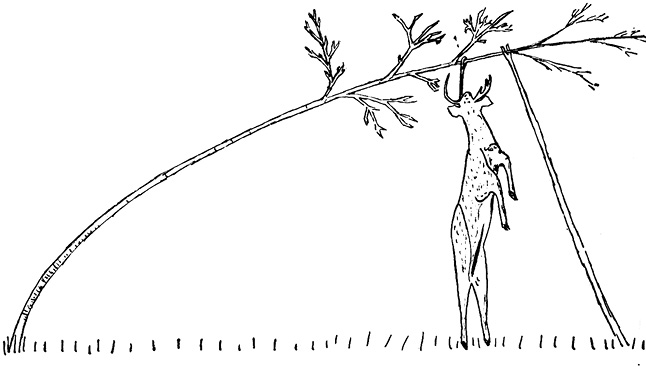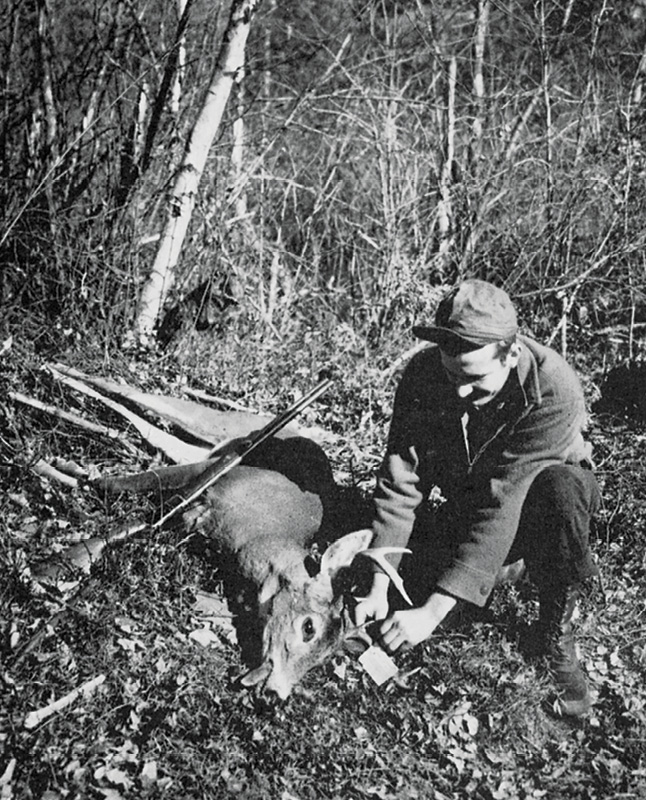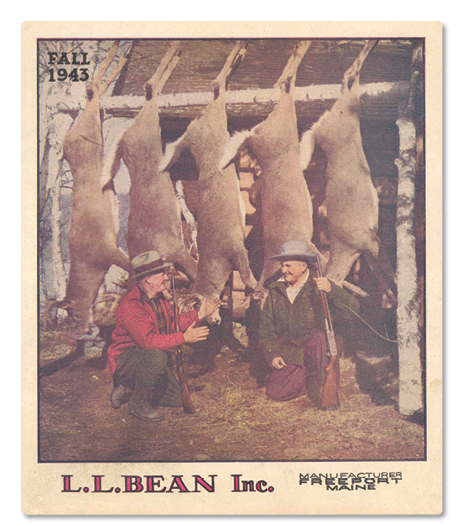Chapter 4
How to Hang up a Deer
If a small one you will have no trouble as you can tie your drag line around his neck, throw the loose end over the limb of a tree and pull him clear of the ground.
If a big deer, find a sapling that can be pulled over, so that, you can hitch your line to it high enough, so that, when it springs back it will lift the carcass from the ground. In case the “spring back” is not enough, use a pole with crotch or fork at end to prop it back in place. In some cases two poles are much better than one. Now sign and detach a tag from your hunting license and fasten it to the deer.

Showing how one man can hang up a large deer.
If deer is hung in the open, arrange black growth boughs, so the sun will not shine on it. If in fly time use an inexpensive cotton deer bag with puckering string that closes bag tight around the neck. If weather is warm get it into cold storage as soon as possible. A lot of game is spoiled every year before it reaches the table.
The next thing is to spot (blaze) trees and bushes from where it is hung to the nearest travelled trail or stream that leads to camp.
BILL GORMAN > Don’t let your deer hang for more than a day. Get it into a cooler and then to a butcher as soon as possible.
Do not depend on your memory as to where the deer is hung. Many a deer has never been found after it was hung up. Should you employ a guide, he will do all this work, but, in place of a gun insist that he take along a medium size axe, a small camp kit with tea and lunch enough for 36 hours, (see Chapter 38). If you want to get pictures have him take along a camera. Your own rifle is enough but if you want to get partridge he can take along your light shot gun.

Fill out the tag that is attached to your hunting license and fasten it to your deer. In Maine, deer may be confiscated if not properly tagged.
The most difficult and back-breaking task connected with deer hunting is the process of transporting a deer to camp. If the deer is small and there is snow on the ground, you can do fairly well by fastening a rope to the neck or antlers of the deer and attaching the loose end to a piece of sapling about 1 ½ inches in diameter and six inches long, using the sapling as a handle. If you have a companion, use a handle two feet in length.
If a big deer use a one wheel deer carrier or hire someone with a horse.
Dragging a big buck on bare ground for several miles is a task that you will long remember. Get all the members of your party to help you.

If you kill a deer “way back” and deer carrier is not available and you can hire someone with a horse to transport it to camp, you certainly are in luck, because the few dollars that you spend for toting will save you much hard labor.
If you are obliged to get your deer out on bare ground, without a horse or a deer carrier, use two poles. Tie deer well up between them. You will find this much better than one pole as it eliminates all the disagreeable “slat” or swinging.
BILL GORMAN > In Maine, hunters prize body weight almost as much as a nice set of antlers. Hunters who harvest a deer with a minimum dressed weight of 200 pounds are eligible for the Biggest Bucks in Maine Club, sponsored by the Maine Sportsman magazine. I’m not a member of the 200 club yet: the biggest deer I’ve shot in Maine weighed 175 pounds.